Women Fight for an Even Break in Aussie Football
Three years after the launch of their semiprofessional league in Australia, female athletes confront a backlash in the media and within the sport.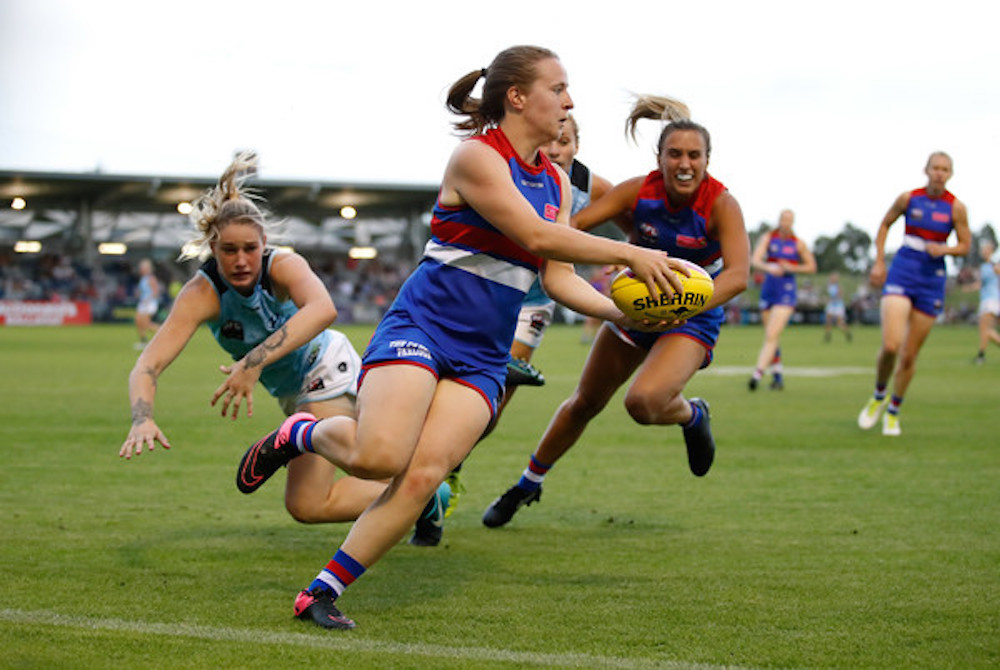 Women compete in a national Australian rules football match in 2018. After a successful launch in 2017, the semiprofessional women's league now is facing backlash in the media and within the sport. (Zimbio.com / Adam Trafford / AFL Media / Getty Images AsiaPac)
Women compete in a national Australian rules football match in 2018. After a successful launch in 2017, the semiprofessional women's league now is facing backlash in the media and within the sport. (Zimbio.com / Adam Trafford / AFL Media / Getty Images AsiaPac)
Truthdig is proud to present this article as part of its Global Voices: Truthdig Women Reporting, a series from a network of female correspondents around the world who are dedicated to pursuing truth within their countries and elsewhere.
Editor’s note: The sport known as soccer in the United States and Canada is called football, or association football, in many other countries. Australian rules football differs from both American football and soccer in many ways. Among the differences from soccer: An oval-shaped ball is used and players are allowed to use their hands or bodies to tackle others. Australian rules football has only a handful of similarities to North American football. In this article, the women who play in the national Australia rules football league are referred to as semiprofessional because they are paid, but not enough to make a living. The women must hold other jobs or have other sources of income.
“It was bigger than football.”
This is one of the remarks that open the award-winning audio documentary “The First Friday in February.” The show features voices of women who were among the 24,500 spectators packed into the stands of Princes Park in Melbourne on Feb. 3, 2017, to watch the first-ever game of the AFLW—the competition known as AFL Women’s, operated by the Australian Football League.
For many women, the occasion meant so much that their societal lives could now be divided, as one of the participants in the documentary said, into two parts—“before AFLW and after AFLW.”
The Australian Football League (AFL) was not prepared for women’s semiprofessional football to take off the way it did—even if all the signs had indicated it would succeed. Before the inauguration of the AFLW, women’s exhibition games had been played during the AFL men’s season in 2015 and 2016, with TV viewership in some cases exceeding that of the men’s games held on the same weekend.
The AFL originally opted to hold the opening match of the AFLW at Olympic Oval, a stadium with a capacity of just 7,000. Eventually the contest was shifted to the much larger Princes Park. That Princes Park was packed to capacity, with thousands more turned away, spoke volumes about the AFL’s failure to see the value and potential of a division for women’s play.
Thanks to the runaway success of its first season, the AFLW created spectacular grassroots momentum. Participation in amateur women’s football soared, with a 76 percent increase over the previous year in the number of girls’ and women’s teams. This included a 78 percent increase in the number of women playing in registered club competitions in some states and territories. If ever one needed evidence of the adage “you can’t see what you can’t be” in a sporting context, this was it.
How Times Have Changed
During the AFLW’s first season, the AFL executive branch appeared enthusiastic about the women’s success, with CEO Gillon McLachlan terming it a “revolution.” Media hailed the resulting surge in amateur football.
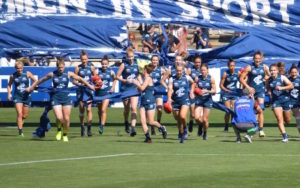
To recount this history at the beginning of the AFLW’s third season, however, is to lament how administrative and media perception has changed in a short time. Although the AFLW is still very popular with the public, the AFL’s willingness to promote the competition flagged noticeably in the second season, according to AFLW chief Nicole Livingstone. (AFLW officials say a more concerted marketing push is planned for this season.)
The AFLW initially was scheduled to launch in 2020, and many Australians were surprised when McLachlan announced that it would begin in 2017 instead. Despite the eagerness this change suggested, the AFL has come up short in supporting the new league.
In season three, most AFLW players are receiving only $9,483 (in U.S. dollars) for the 20-week season—a 38 percent increase from last year’s paychecks but still equivalent only to the average Australian’s earnings over an eight-week period. This is about 4 percent of the average pay of the men playing in the AFL.
The male players at the AFL’s professional level are paid handsomely. A 2017 article said the average salary increased the previous year from US$218,728 to US$262,652. According to a February 2018 article, “nine players earned more than $1 million (US$707,936) last season.”
While some justify the women’s low salaries as the inevitable starting point for a fledgling competition, others point to the fact that in 2017 the nonprofit AFL posted a net surplus of US $34,784,581.
Some observers claim the AFL fears its own women’s competition will have too much overlap with the men’s football season and the summer season of other popular Australian sports such as tennis and cricket. This may be partly why the AFL decreased the number of games in the AFLW’s third season, even as it added two new teams.
More teams and a shorter season result in less play—to the point that, in 2019, each team is unable to compete against every other team. AFLW supporters want to see an expansion of the season—and growth of the women’s competition—for the sake of broader cultural change and increased revenue in the future. They feel the AFL should concentrate less on short-term profit and take a longer view in promoting this women’s elite competition.
Media Attacks
After displaying initial backing, much of the mainstream media either has stayed silent on the subject or has been dominated by those critical of the women’s league.
One example is sports radio station SEN opening its microphone in January to former AFL men’s star Kane Cornes, who defended criticism of the AFLW by saying that it “has received more leg-ups than any other sport in Australia.” Cornes pointed to the fact that fans do not have pay to attend AFLW games and claimed that the AFL had supported the women’s competition by distributing “promotional material everywhere.”
Cornes’ comments did not go without rebuttal. To argue that the AFLW has received more leg-ups than any other sport in Australia is “simply false,” columnist Erin Riley wrote in Eureka Street, an Australian online magazine. According to Riley, men historically have had inordinate advantages over women in sports, made possible by patriarchy and its associated marginalization of women. “It is precisely men like Kane Cornes who have benefited from this massive cultural leg-up,” Riley wrote.
Another round of anti-AFLW rhetoric came from Mark Robinson, head football writer at the popular tabloid The Herald Sun. When the AFL decreased the number of games in the women’s season, many AFLW players took to social media to say that such a move undermined the integrity of the competition.
In reaction, Robinson launched a tirade in print, writing that AFLW players were demonstrating a “sense of entitlement” by expecting a season in which teams would play each other at least once. He went on to demean the women’s game, claiming it was of “average” standard and played in “slow-motion.” He added that “half of the population wouldn’t give (the AFLW) a second thought.”
In September 2018, former AFL coach Mick Malthouse added another angle to anti-AFLW criticism. Appearing on a TV panel, Malthouse said he would not want his granddaughters to play a game that was “rough and tough.”
He elaborated: “I don’t like (AFLW) in its present format … they subject themselves to massive injuries. I suggested the ball should be smaller and (there) should be no bumps and only tackle, (and that they) not go to ground. That would make it uniquely women’s football.”
Malthouse’s comments reflect the cultural attitude that traditional gender norms are violated if women participate in contact sports. His comments ignore the fact that women have advocated for having Australian rules football teams since the end of the 19th century and participated in competitive matches for more than 100 years.
The War on Women (in Sports)
Why has such a sense of threat and competition accompanied the development of a national, semiprofessional women’s football league? One answer is offered in Susan Faludi’s classic book “Backlash: The Undeclared War Against American Women.”
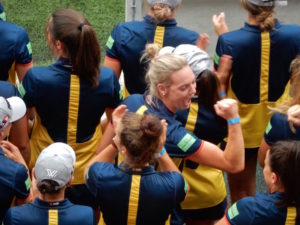
According to Faludi, perceived or real strides toward gender equality are predictably accompanied by a backlash. “If fear and loathing of feminism is a sort of perpetual viral condition in our culture, it is not always in an acute stage,” she wrote. “Such flare-ups are hardly random… (and) they have always arisen in reaction to women’s progress.”
No exception is to be found in sports, being one of the last bastions of patriarchy—or at least a particularly resolute stronghold. While outbursts in the media by respected voices in the game such as Cornes, Robinson and Malthouse are the most obvious examples of backlash, more insidious instances abound.
In season one, coach Bec Goddard led the Adelaide Crows to the AFLW premiership, or season championship. It was a stunning achievement given that her players lived in two states in South Australia and the Northern Territory. Players trained separately, Goddard conducted team meetings via Skype and the team only came together on weekends for matches. That such an enormous logistical challenge resulted in a premiership was a remarkable achievement for Goddard and her players. In season two, the Crows were again in premiership contention and narrowly missed out for a spot in the finals.
Despite Goddard’s success, the Crows announced in April 2018 that she would no longer continue as coach of the club, and she was later replaced by AFL assistant coach Matthew Clarke. In a messy public fallout, this information emerged: Goddard had asked for a year-round, full-time coaching role, which, given the short AFLW season, also would have entailed assisting in the men’s program. The club claimed it could not give Goddard a role in the men’s program and instead offered her a full-time role as an “administrative assistant” as well as AFLW coach.
Goddard, who reportedly was one of the lowest paid AFLW coaches, walked away from the insulting offer. Clarke accepted the AFLW coaching role plus a bonus: the year-round, full-time coaching position (across the men’s and women’s programs) that Goddard had wanted. A similar position went to Paul Groves, coach of the Western Bulldogs, the team that won the competition in season two. To retain Groves, that club gave him a coaching position in the Bulldogs’ men’s program in addition to his AFLW position.
No Female Coaches
This kind of double standard has led to a serious end result: After two full seasons and the departure of Goddard and Michelle Cowan, another female coach, not one woman currently is serving in a senior coaching role in the AFLW. (Cowan reportedly left due to lack of team resources and coaching development opportunities.)
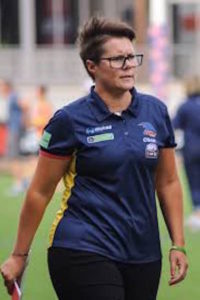
Last month, Mark Brayshaw, chief executive of the AFL Coaches Association, was asked about the lack of female coaches at the senior level. Brayshaw said, “Seventy-five percent of the male coaches are ex-players. And in our view, in a short period of time, there’ll be enough ex-AFLW players (who) can become coaches.” Brayshaw ignored the fact that Goddard previously had played football and later switched to coaching, and he also ignored many examples of great coaches (both women and men) who have not played the game.
Brayshaw announced a program to train women for senior coaching positions in the future. However, critics say the problem isn’t a lack of women available to do the job, but that those who demonstrably can do the job are not retained and supported.
“What are we doing for the coaches who already have the expertise they need?” said Susan Alberti, former vice president of the Western Bulldogs and longtime financial donor to women’s football. In a recent interview with this reporter, Alberti elaborated: “They (Goddard and Cowan) had to go back to their old jobs for income security. We’re not making it possible for them in their career (to coach).”
AFLW supporters fear the women’s league will continue to be held back and undermined by the AFL and by men who have made their names and careers in the sport.
Those supporters say the emergence of the women’s competition must be reframed significantly. Instead of the notion that it is taking something away from the men’s competition, the success of the AFLW should be seen as a win for everyone involved in sports.
“The message we have to get out there is that it’s not men versus women or vice versa,” Alberti said. “We need to complement each other, work together, because we (all) love our game. Not their game, our game. That’s what I want to see, everybody working together.”
Your support matters…Independent journalism is under threat and overshadowed by heavily funded mainstream media.
You can help level the playing field. Become a member.
Your tax-deductible contribution keeps us digging beneath the headlines to give you thought-provoking, investigative reporting and analysis that unearths what's really happening- without compromise.
Give today to support our courageous, independent journalists.

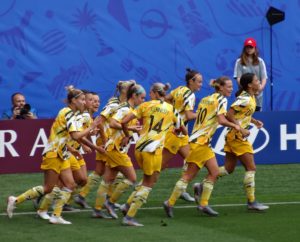




You need to be a supporter to comment.
There are currently no responses to this article.
Be the first to respond.